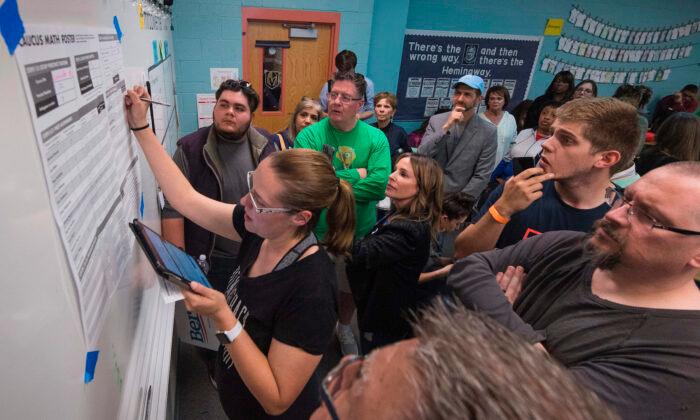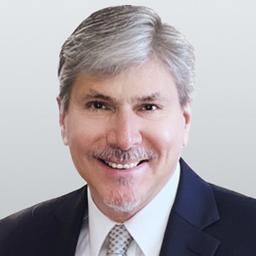If you want to get a reaction from an Iowan, say you’re tired of having their caucuses select a president for the entire country. You’ll get an earful of reasons why that just ain’t so faster than you can say “pork queen.”
Iowa’s position on the election calendar has given the state’s caucus-goers an early thumbs up—or down—on presidential hopefuls since the early 1970s. Nevada’s caucuses, which occur a few weeks later, are the “First in the West.” That makes both states bellwethers for public opinion. Many a candidate has surged in primary voting after a good showing in Iowa, while many others have dropped out after disappointing results in Nevada.
Though the number of states holding caucuses rather than primary elections during presidential election cycles can vary, Wyoming, American Samoa, Guam, and the U.S. Virgin Islands are also expected to hold caucuses in 2024.
Caucuses and primary elections both play roles in selecting major party candidates for presidential elections. But that’s about all they have in common.
The Epoch Times spoke with Republican party leaders in Iowa, Nevada, and North Dakota to learn how their parties’ caucuses work and why some states prefer them. Democratic leaders in those states didn’t respond to requests for comment.
Organized by Parties, Not States
Caucuses are local gatherings of party members organized by the parties themselves, not by the states.Primary elections are organized and paid for by the states and are subject to state election laws. To a voter, primaries may seem exactly like regular elections, except that all the candidates are from the same party.

In many state primaries, Republicans and Democrats vote on the same day and in the same precincts. They’re just given different ballots depending on party affiliation. In many states, registered voters can choose which primary to vote in regardless of their party affiliation.
Caucuses look and feel different because they are partisan gatherings, not subject to the same laws as a primary election. Each political party is free to organize caucuses according to its own rules.
The downside for the parties is that they receive no organizational help from the states. Each party must finance and operate its own events. One exception is that in Iowa, state law mandates that public schools must allow their facilities to be used as caucus locations.
Most caucuses are held at the precinct level, the smallest unit in the election system. That can make organizing caucuses a major challenge for party leaders.
For example, Iowa’s Polk County, which includes Des Moines, has 176 precincts, and each will have its own caucus.
“We never know how many to project; you don’t register or anything like that,” Gloria Mazza, chair of the Republican Party of Polk County, told The Epoch Times. “We know the turnout from, say, a couple of years ago. Then we’re looking to find a location in the precinct that will hold close to 300 people.”
From finding the venue to printing the materials and setting up chairs, caucuses are entirely a volunteer operation.
“According to our rules, the state party is to ensure at least eight caucus locations in North Dakota,” Republican State Committeeman Shane Goettle told The Epoch Times. “Those will be in our eight major cities, which are also ideally situated around the state.”
However, all of North Dakota’s 47 legislative districts can choose to hold caucuses if they wish.
“So right now, we don’t know how many we will have, but there will be at least eight,” Mr. Goettle said.
An Event, Not a Line
Primary election voters are used to showing up, sometimes standing in line, casting a vote, and leaving immediately. Most caucuses don’t operate like that.Caucuses are generally held in the evening in a public space such as a school gym or community center, and they may last from 30 minutes to three hours.
That’s especially true in states such as Iowa and Nevada, where caucuses are used to conduct party business other than the selection of a presidential nominee.

“We do two things,” Jeff Kaufmann, chairman of the Republican Party of Iowa, told The Epoch Times. “We do our party business: elect people to go to the county conventions and elect our local leaders. That’s a caucus. Almost all parties have that.
“What makes Iowa unique is that we have a presidential preference poll, and we go first [in the nation]. ... Those are the two orders of business.”
Attendance varies based on the size of the precinct and can range from about 40 to as many as 500 participants, according to Ms. Mazza. A typical Iowa caucus may last from 90 minutes to two hours, though many attendees leave after the presidential preference poll.
Nevadans also use caucuses to conduct local party business, though their meetings are a bit shorter. They last between 30 minutes and an hour, Jim DeGraffenreid, Republican National Committeeman for Nevada, told The Epoch Times. “It just depends on how many people are there and how deep into discussion they want to get.”
Electioneering Allowed
States generally prohibit campaigning for a particular candidate in or near a polling place. They do that to ensure that the voting is conducted in a neutral environment. Once voters approach the voting site, no one is allowed to influence their votes. Usually, even clothing or buttons touting a candidate are prohibited.That’s not the case with caucuses.
At a caucus, presidential candidates and their representatives are usually allowed to make speeches. Neighbors can discuss the candidates among themselves and try to persuade one another.

“I’ve experienced a caucus where there was a debate,” Mr. Goettle said of North Dakota. “People could stand up and make their best case for the candidate of their choice. And you were free to cast your vote and leave or to sit and listen to the discussion.”
In Iowa, where candidates are eager to make their first impression on voters, it can be tough for organizers to fit all speakers into the program, according to Ms. Mazza.
“In my precinct in 2016, we had [former President Donald] Trump, [Florida Sen. Marco] Rubio, [former Pennsylvania congressman Rick] Santorum, and [former Secretary of Housing and Urban Development] Ben Carson show up that night, and we only allow three to five minutes,” Ms. Mazza said.
“That goes even for the candidates themselves because others will have a spokesperson recruited to speak. That can take a while,” she said.
After the speechifying, caucus-goers vote on the candidate of choice. In most caucuses, but not all, that involves casting a ballot.
Iowa Democrats vote with their feet, moving to a designated area of the room for their candidate of choice. Democrats can also vote “uncommitted,” meaning they’re not choosing a candidate at that time.
Retail Politics
The strength of the caucus system is that it helps build a grassroots party organization, and it encourages politicians to engage in retail politics, engaging voters where they live and work.That explains why so many candidates spend time in the diners, town halls, and farms of Iowa. The key to doing well in a caucus state is to appeal to the rank-and-file voters within the party.
Getting out and talking to people is the key to victory in Iowa’s caucuses, according to Ms. Mazza.
“In 2016 [Texas Sen.] Ted Cruz won here. Trump didn’t win the Iowa caucuses,” she said. “And when we go back to the [election] before, Santorum won here. He was in every little café and corner of our state.”

In Nevada, the caucus system forces candidates to reach out to registered party voters, according to Mr. DeGraffenreid.
“The route to success is in reaching out to grassroots activists statewide and making sure that the candidate makes their pitch to the people who are most active in politics and the ones who are going to be at those precinct meetings,” he said.
They Work
Winning in Iowa isn’t a sure sign of success in the general election. Since 1976, the first year when both the Democratic and Republican caucuses in Iowa were first in the nation, just three of seven non-incumbents who won in the Iowa caucuses have gone on to win the general election: Jimmy Carter in 1976, George W. Bush in 2000, and Barack Obama in 2008.In fact, winning in Iowa can be less important than placing well, especially for long-shot candidates. An unexpected third-place finish can generate the funding and publicity to continue the race.
Neither does Nevada, the “First in the West,” have a perfect record in picking winners. Donald Trump (2016) was the only non-sitting president to place first in Nevada’s caucuses and go on to win the general election.
Some states that normally hold caucuses forgo them in some presidential election years. Iowa, the best-known caucus state, chose to have a presidential primary instead of caucuses in 1916. North Dakota Republicans didn’t hold caucuses in 2004. Nevada will have a presidential primary for Democrats in 2024, but Republicans will still hold caucuses.
Where caucuses are held, they appear to be popular with voters.
About 35,000 Republican voters turned out for the most recent Nevada caucuses, according to Mr. DeGraffenreid.
“That was actually on par for participation in the state primary for presidential preference that we did before the caucuses started, so turnout is actually fairly comparable between the two systems,” he said.
Party leaders seem to like them also, seeing them as a good way to promote participation in the political system.
The caucus is the perfect blend of presidential and local politics, Mr. Kaufmann said.
“I can’t think of anyplace else where we have well over 1,000 of these events, all happening on the same night, to try to determine who the next president of the United States is going to be,” he said.
“It’s the way the Founding Fathers envisioned it in terms of the people having a choice.”





